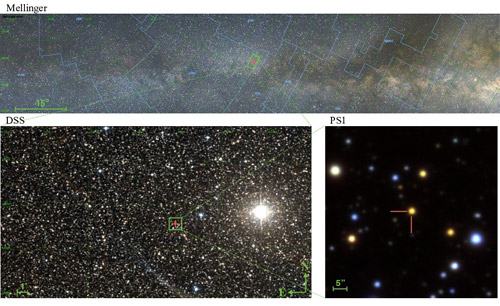 Scientists from Aryabhatta Research Institute of Observational Sciences (ARIES) and Indian Institute of Astrophysics (IIA) autonomous institutes of Department of Science & Technology, Government of India studied the photometric and spectroscopic follow-up covering about 500 days of the event evolution observations of the event Gaia16aye, one of the first microlensing events detected by the Gaia International space mission. They established that the system was composed of two main-sequence stars with mass 0.57 and 0.37 mass of Sun, a finding that can help probe dark objects, including black holes.
Scientists from Aryabhatta Research Institute of Observational Sciences (ARIES) and Indian Institute of Astrophysics (IIA) autonomous institutes of Department of Science & Technology, Government of India studied the photometric and spectroscopic follow-up covering about 500 days of the event evolution observations of the event Gaia16aye, one of the first microlensing events detected by the Gaia International space mission. They established that the system was composed of two main-sequence stars with mass 0.57 and 0.37 mass of Sun, a finding that can help probe dark objects, including black holes.
Publication details : DOI: 10.1051/0004 6361/201935097
For more details, Dr. Alok Chandra Gupta (Scientist - F) (+91-7895966668, alok[at]aries[dot]res[dot]in) can be contacted.






























